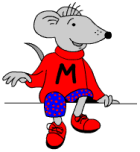Free maths worksheet from mathsblog.co.uk
 1000 is a very large number for children working in Year 3 and one which is difficult to imagine the size of. The sheet asks how many different ways can two numbers be added to make 1000, using only whole hundreds.To be able to do this children need to be confident with their numbers up to 10 and be able to know which pairs of numbers add up to 10.
1000 is a very large number for children working in Year 3 and one which is difficult to imagine the size of. The sheet asks how many different ways can two numbers be added to make 1000, using only whole hundreds.To be able to do this children need to be confident with their numbers up to 10 and be able to know which pairs of numbers add up to 10.
As an investigation it is very similar to asking how many ways can 100 be made only using whole tens.
 A thousand is a pretty big number to work with and one of the best ways to beginn to appreciate its size is to work with whole hundreds to make 1000.
A thousand is a pretty big number to work with and one of the best ways to beginn to appreciate its size is to work with whole hundreds to make 1000. Here is a straightforward worksheet which is more open ended. It allows the child to find two numbers which add up to 100. Some children will work in a well ordered methodical way eg by adding whole tens 90 + 10, 80 + 20, 70 + 30 etc whilst others will choose a more random approach.
Here is a straightforward worksheet which is more open ended. It allows the child to find two numbers which add up to 100. Some children will work in a well ordered methodical way eg by adding whole tens 90 + 10, 80 + 20, 70 + 30 etc whilst others will choose a more random approach. A second, quick revision of counting on. Whilst some children may well still be starting with the given number and then counting on with their fingers others will be using more sophisticated methods such as:
A second, quick revision of counting on. Whilst some children may well still be starting with the given number and then counting on with their fingers others will be using more sophisticated methods such as: Whilst in year 1 and 2 the expectation is that children will know which pairs of numbers will make 10, by year 3 they are expected to be able to work out quickly pairs of numbers that make 100.
Whilst in year 1 and 2 the expectation is that children will know which pairs of numbers will make 10, by year 3 they are expected to be able to work out quickly pairs of numbers that make 100.